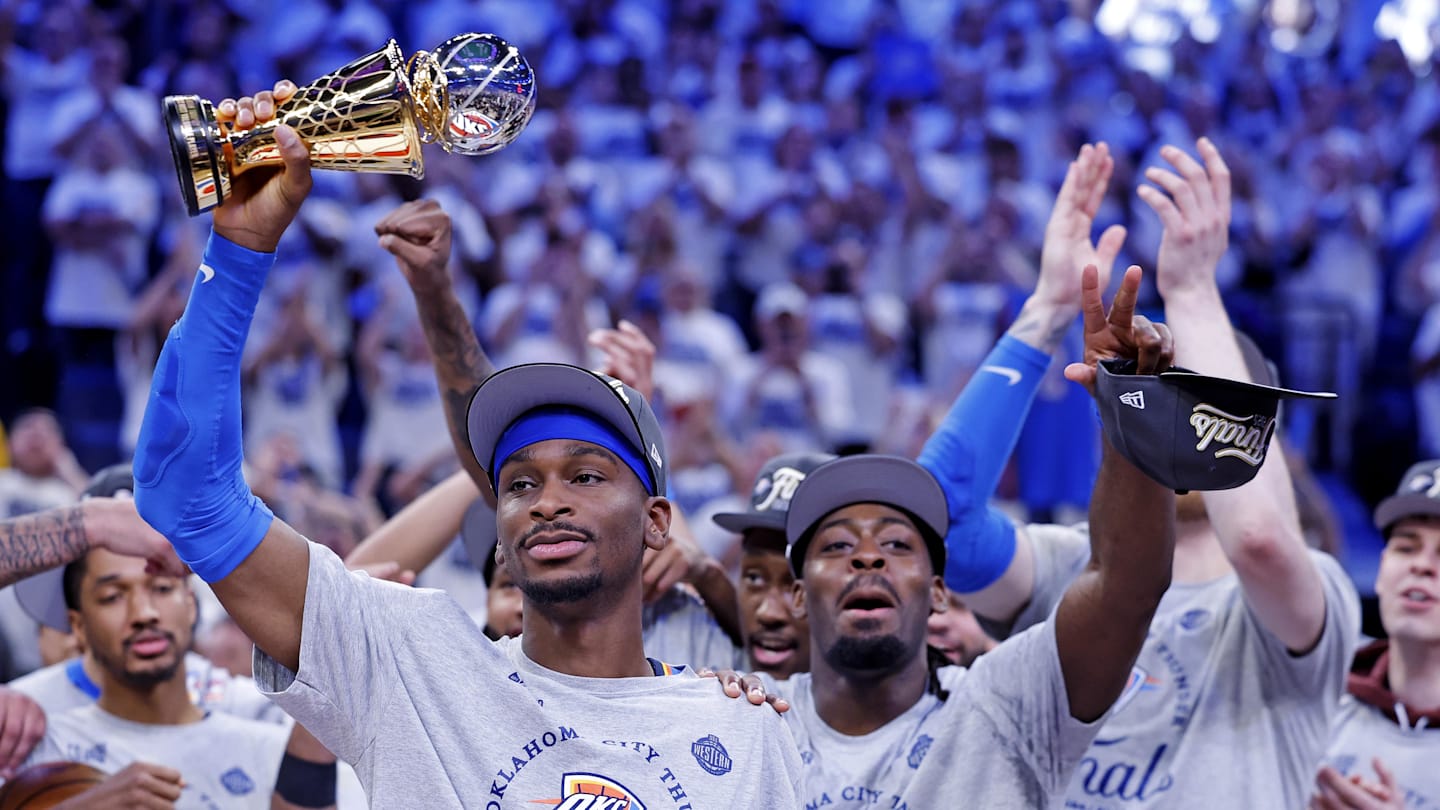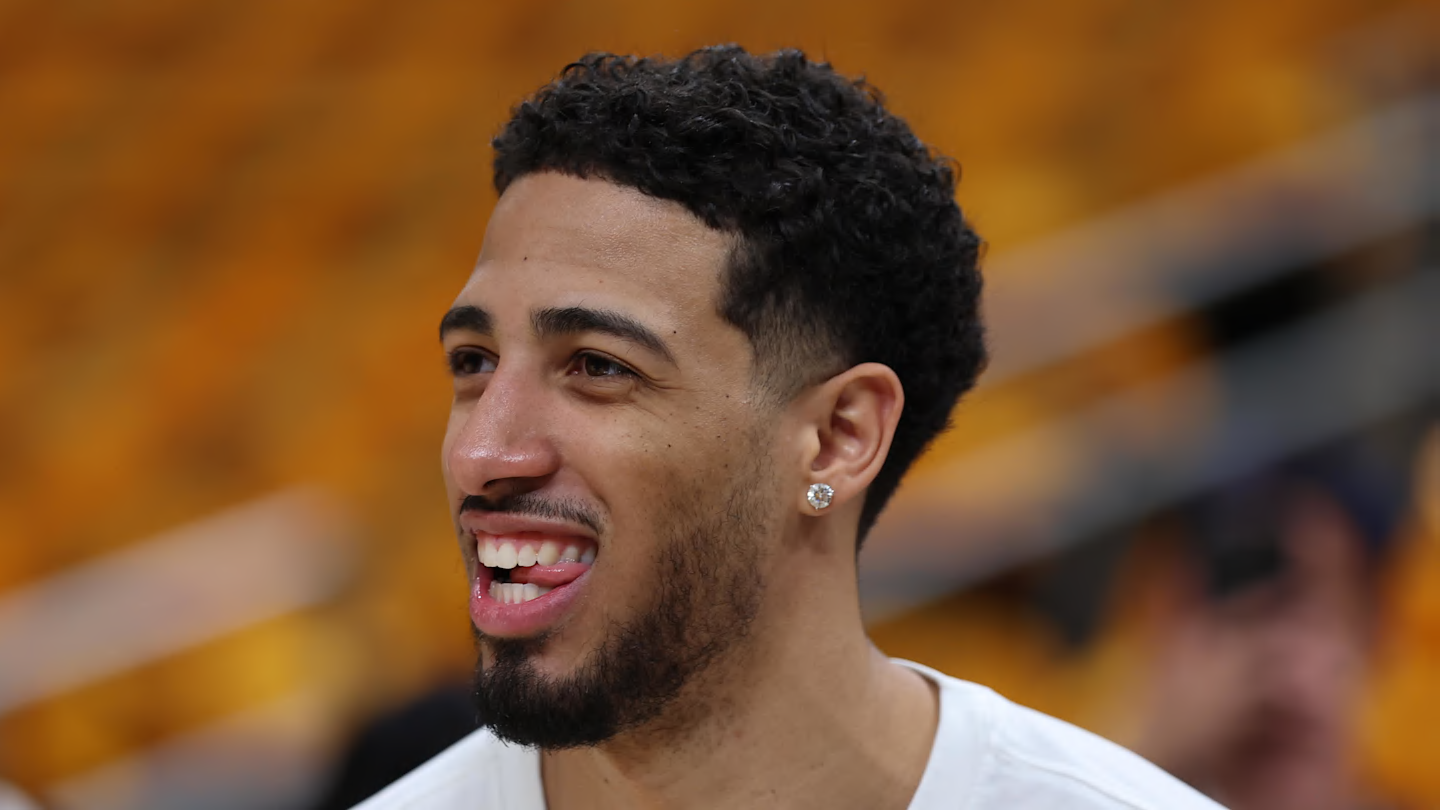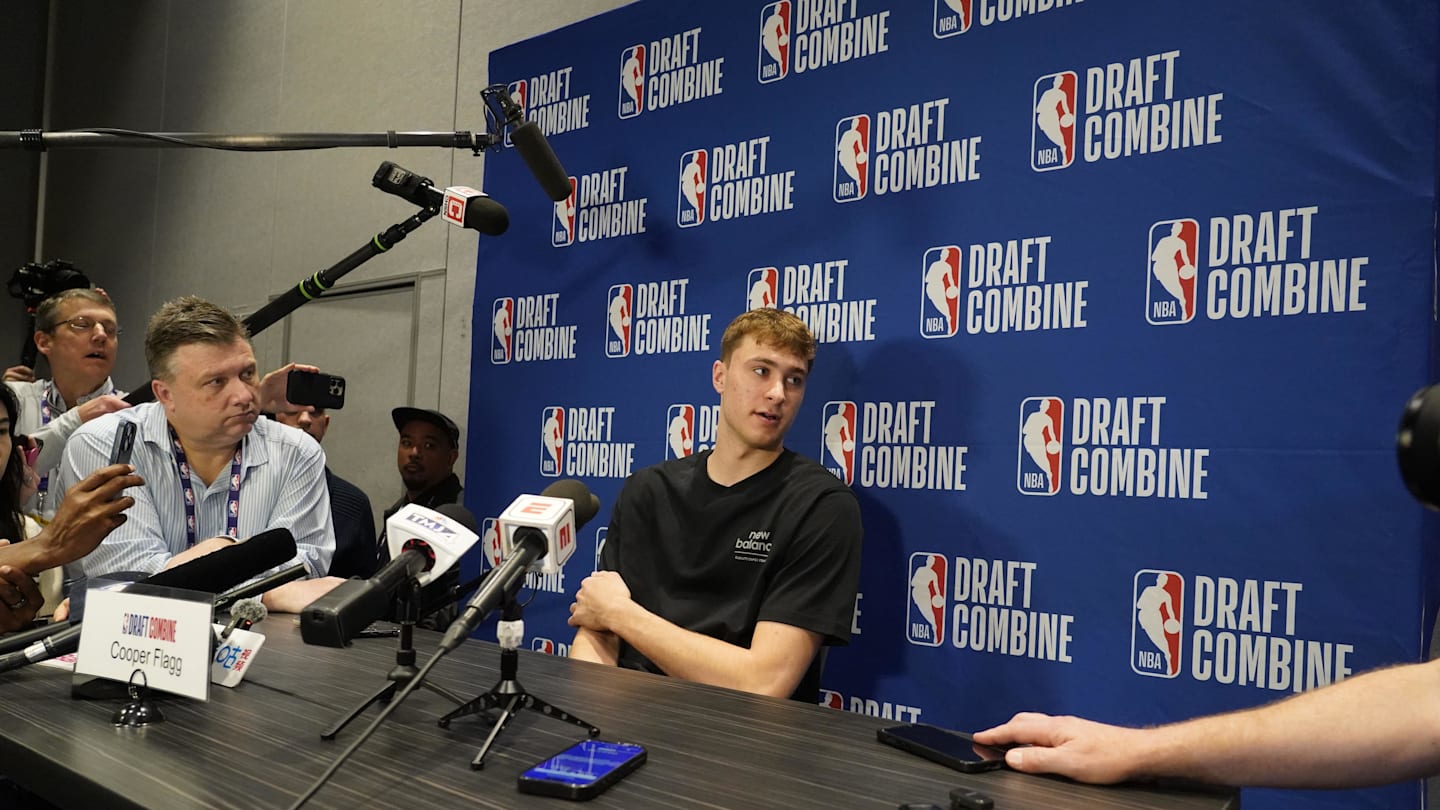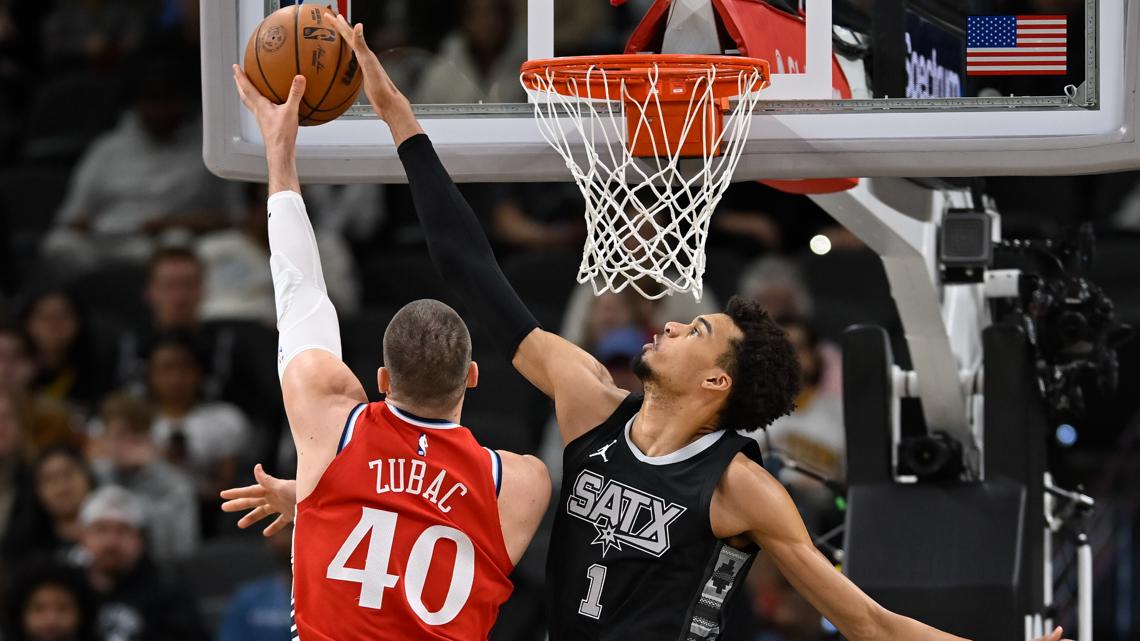The Oklahoma City Thunder moved on to the NBA Finals earlier this week in defeating the Minnesota Timberwolves in a decisive Game 5 victory. The 124–94 blowout win was an embodiment of everything the Thunder have become—a complete team, with stars dominating in their expected roles and the depth pieces shining at just the right moments. Outside of an ugly Game 3 loss, it was a complete showing of great basketball from OKC.
The eye test suggested as much, anyway. Tune into any game of this year’s Western Conference finals and the average observer would clearly see one team playing a level above the other. The Thunder played with a championship-level combination of intentionality, intensity and chemistry. The Timberwolves are a talented team and certainly no pushover but could only do so much in the face of a great team coalescing as a championship lay within reach.
The excellence went beneath the surface, too. Here are five stats that help tell the story of how OKC brushed Minnesota aside en route to the franchise’s first NBA Finals appearance since 2012.
In many ways, turnovers are the key to how the Thunder want to play. An overtly physical style of play combined with an entire roster’s worth of go-go gadget arms that are coached to constantly impede opponents’ passing lanes means the basketball is constantly loose—and that’s when OKC pounces. The team is very dangerous in transition and the roster’s collective propensity to take care of the ball on their end makes for a historic concoction. The Thunder are en route to setting an NBA playoff record for best turnover differential ever, entering the NBA Finals at +100 in turnover margin.
In this regard they absolutely dominated the Timberwolves in the Western Conference finals, and it came with a very tangible result on the scoreboard.
The Thunder totaled 108 points off 87 turnovers per game in the five-game series against Minnesota, an average of 21.6 points and 17.4 turnovers per contest. That makes for quite the stark contrast compared to the Wolves’ output; Anthony Edwards & Co. managed only 16 points off turnovers per game in the series loss. Every game OKC built a cushion of five-ish points from their turnovers alone. They harassed the Wolves’ ballhandlers and sprinted out into the open court whenever possible. It’s especially impressive considering Minnesota ranked 12th in turnovers per game this season.
Some of this can be chalked up to a certain level of carelessness on the opponent’s part. At their worst moments, the Timberwolves were not nearly as dedicated to avoiding turnovers as they should have been. But for the most part, this is just what the Thunder do. They force the best ballhandlers into an almost sheepish caution while coming up the court and relentlessly pick on the weaker links until they break, over and over and over. The flood of points that follows is the result.
Perhaps the most shocking part of this year’s WCF was how effortless the Thunder made it look to completely bottle up Edwards and Randle. OKC’s defense is obviously elite and entered the series after forcing Nikola Jokic into one of the worst stretches of play the league has ever seen from the three-time MVP. But in that second-round series it at least felt like Jokic was valiantly battling against the incoming tide. Fruitlessly, of course, but he was putting up a fight.
Edwards and Randle, though … they were just swallowed. The Thunder completely smothered them. And no number shows how complete their effort was than the 101.9 offensive rating the Wolves had in the 128 minutes the two stars shared the floor.
How bad is that? The Washington Wizards had the worst offensive rating in the NBA this season at 105.8. The year before that, the Memphis Grizzlies ranked last with an offensive rating of 106.8. Going even further back, Minnesota’s offensive production with those two on the floor is on par with the 2015–16 Phoenix Suns, who went 23–59 while posting an offensive rating of 101.5 (the Philadelphia 76ers were last that season with a 98.4 offensive rating).
Those comparisons, of course, aren’t entirely fair given the sample size but should put into perspective just how complete OKC’s defensive effort was on the opposing team’s most dangerous players. The defense was so impenetrable, Edwards and Randle scored at an efficiency level just barely above the Process-era Sixers. That goes beyond the two having a bad stretch or one Thunder defender in particular giving them trouble. It takes a village to shut down two elite scorers to that degree, and it’s largely why it felt like OKC was always in control of the series, even after the Game 3 blowout.
The Thunder gave the NBA world plenty of talking points on the court with their play, but the loudest from the series was clearly Gilgeous-Alexander’s propensity to end up at the free throw line. The recently minted first-time MVP was lambasted with accusations of flopping and forced many in the NBA media sphere to wonder aloud why the tight whistle from earlier in the playoffs disappeared.
Now that the dust has settled, we can examine the final numbers. Gilgeous-Alexander scored 28% of his points from the free throw line against the Timberwolves.
To put that into perspective, Jalen Brunson of the New York Knicks currently checks in with 25.5% of his points scored via the charity stripe in the Eastern Conference finals. Gilgeous-Alexander’s counterpart in Minnesota, Edwards, finished the series with 19.1% of his points coming from the foul line. Among all players who average at least 30 minutes per game in the conference finals, only Josh Hart (39.2%) gets more of his points from the free throw line.
How does that stack up historically? This time last year, the only rotation players in Gilgeous-Alexander’s stratosphere for this stat were Boston Celtics’ Sam Hauser (28.5%) and Minnesota’s Rudy Gobert (25.4%). During the 2022–23 playoffs, Anthony Davis exceeded Gilgeous-Alexander’s numbers by earning 32.7% of his points from the free throw line, while Jayson Tatum and Jimmy Butler checked in at 26%. The closest comparison for this series and player likely comes from 2021–22, when Tatum earned 28% of his points off fouls while beating the Miami Heat in seven games.
All that means Gilgeous-Alexander did not put on the worst display of foul-baiting fans have ever seen in a conference finals series. But he did do enough damage there to control the flow of the game most of the time and the Wolves’ inability to keep him off the line sank them.
The depth of the Thunder is arguably what sets them apart from the rest of the league. The roster is stocked to the brim with smart, talented athletes with overlapping strengths and weaknesses. Hence, coach Mark Daigneault mixed and matched his lineups all series long against the Timberwolves. The result was only three OKC players averaged over 30 minutes per game, and a grand total of 11 members of the roster played at least eight minutes per game throughout the series.
That kind of depth can be a blessing and a curse in the postseason, where the best players rule supreme. It takes a careful hand by the head coach and constant connectivity on the court to ensure that depth can be applied in the right way at the right time. The Thunder, obviously, found that balance quite well against Minnesota—and how many lineups found success proves as much.
Including lineups that recorded only three minutes on the court, the Thunder trotted out 25 different five-man lineups against the Wolves. Fourteen of those five-man combinations recorded a positive net rating. Put more simply, 14 of those lineups outplayed Minnesota in their minutes on the court.
To no surprise, the most-used lineup was the team’s normal starting five of Gilgeous-Alexander, Jalen Williams, Lu Dort, Chet Holmgren and Isaiah Hartenstein. They played 40 minutes together and posted a net rating of 7.5. Swapping out Hartenstein for Cason Wallace resulted in a hilarious 52.8 net rating. Even a small-ball lineup of sorts with Gilgeous-Alexander, Williams, Dort and Alex Caruso around Holmgren put up a 181.8 offensive rating and a 76.9 defensive rating for a total net rating of 104.9.
Given the small number of minutes these lineups played, the absurd advanced numbers should be taken with a substantive grain of salt. No lineup in the league is going to record a net rating of over 100 in more than a few minutes of play. But just how many of those combinations found success reflects how deep OKC’s roster is and how adept Daigneault has been at utilizing it.
The Thunder’s defensive effort should be recognized as a collective achievement by the team.
As Edwards astutely described after his team’s elimination, every player is a puppet on a string on the floor. It’s awe-inspiring to watch at times the way the entire unit flows together on the court. If the point man gets beat, they collapse at just the perfect moment before scrambling in unity to recover. Nobody gets lost off the ball and there are very, very few open shots allowed under any circumstance. OKC certainly gets away with a higher degree of physicality than we’re used to seeing, but that isn’t the only reason for its defensive excellence. It serves as a multiplier for the variety of rangy, intelligent defenders who populate the roster.
But! If there was any one player who fully represents the Thunder’s identity defensively, it is Dort. And the numbers back it up.
Among all Thunder players who defended at least 20 shots against the Wolves, Dort posted the lowest defended field goal percentage, with Minnesota shooting 37.9% on the 58 shots Dort defended. The All-Defense guard was sticky as can be, gluing himself to Edwards or Randle or whichever other Timberwolves player was unfortunate enough to draw him as their primary defender. He has clearly reached the rarefied air of a defender so elite that just being in the general vicinity of a shooter causes hesitation and a miss more often than not.
Few players can boast the same level of shots defended and shots affected quite like Dort. Across the board in these conference finals he’s the only player to defend at least 50 shots and post a sub-40% defended field goal percentage (Hartenstein barely misses the cut with 49 shots defended and opponents making 38.8% of those shots). This remains true when taking a step back and looking at this postseason in general. A total of 28 players, including Dort, have defended 150 shots or more this playoffs. Of all those players, only Mikal Bridges and the eternal Al Horford posted a better defended field goal percentage than Dort’s 41.9%.
Dort will live on in the nightmares of the Timberwolves throughout the offseason. He was an absolute terror and reminded everyone why he should be considered one of the very best wing defenders in the NBA today.



